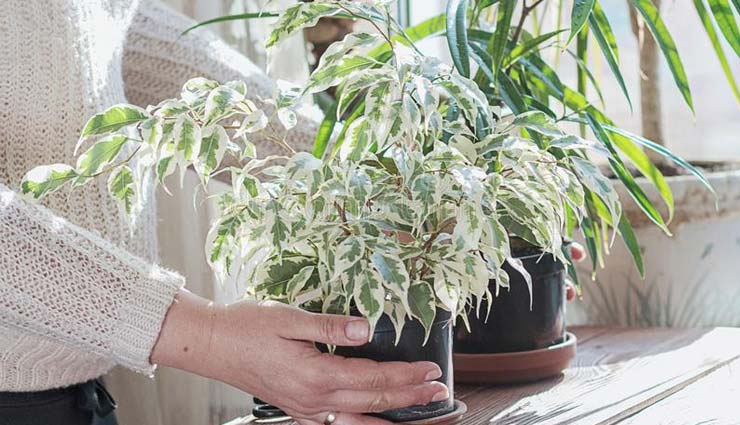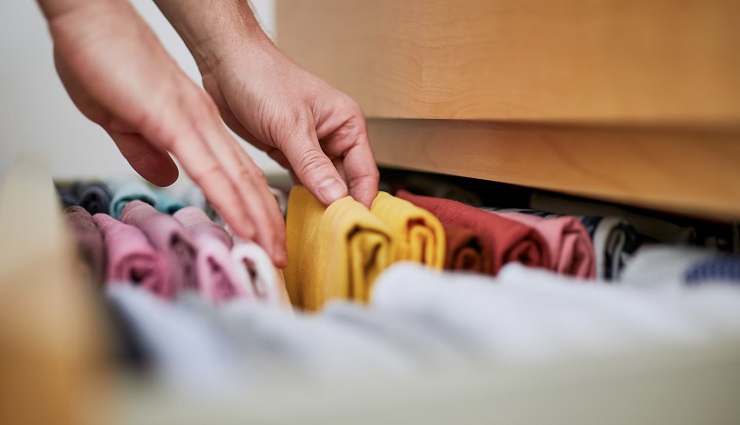If you look at the flowers and plants of the house as a friend and companion, the Benjamina plant is one of those perennial friends and friends in difficult times. If the right conditions are provided, this evergreen flower will be a guest of your home for years, like a home air purifier, which is expensive and beautiful. In this article, you will read about this plant, its unique types, and its maintenance conditions.
Introduction of Benjamina plant
Ficus Benjamina is an evergreen and broad-leaved plant from the family of the ficus tree or Weeping Fig, which grows in tropical and subtropical regions. Although it is native to the tropical forests of Asia, it is widely seen as an ornamental shrub in Iranian homes and offices. She eats.
Benjamina has 850 species with an almost similar appearance. Thin branches, a gray trunk, and dense, shiny dark leaves are the characteristic features of this beautiful plant. This flower lives for 20 to 50 years, and during these years, in addition to being considered an ornamental element of the house, it produces oxygen and cleans dangerous toxins from the air. Did you know that in feng shui exercises, ficus benjamin is called a plant of luck?
Types of Benjamina
1. Benjamina Ablaq plant
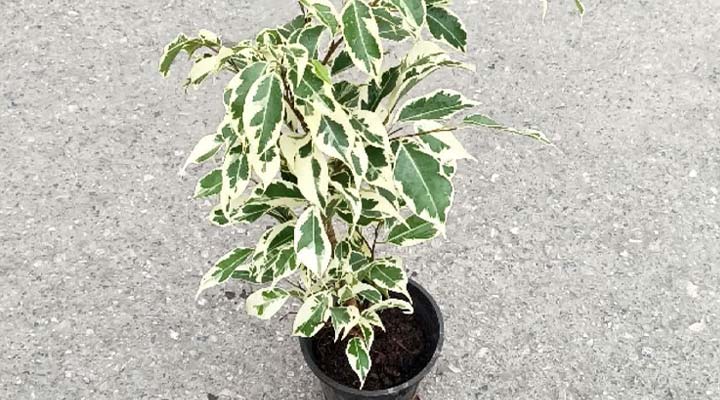
Benjamina Ablaq is one of the most beautiful varieties of Benjamina with hanging branches and double leaves (light green and white or cream). This flower needs a lot of indirect light, but it does not tolerate direct sunlight, and the soil’s surface must be as dry as a finger before each watering.
2. Benjamina Black plant
The leaves of this type of Benjamin are painted light green at the beginning of growth and become dark and black over time. Despite its high sensitivity to displacement and environmental changes, this plant is trendy, and many people love it because of its trunk texture.
3. Benjamina Wiandi plant
With its short height and small oval leaves, Benjamina Viandi belongs to the category of plants suitable for making bonsai and is considered one of the most beautiful species of Benjamina. This plant’s beautiful arc of green and shiny leaves is not seen in other types of Benjamina.
4. Benjamina Amstel plant
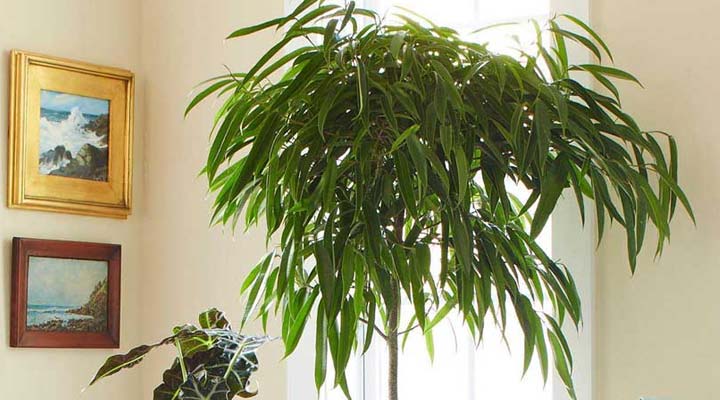
Amstel with dense foliage is the most common type of Benjamin. The narrow and elongated leaves of this plant differ from the broad leaves of Benjamina Ablaq, and since it is very resistant to low light, it is easier to maintain. Many people get the Amstel plant to make bonsai.
5. Benjamina Natasha plant
Benjamina Natasha is so sun-loving that it tolerates direct sunlight. If the maintenance conditions are favorable, this plant grows up to 80 cm, and its green leaves are dense. Of course, it is better to connect another plant to its trunk so that it grows better and more idiotic.
6. Benjamina Monique plant
Benjamina Monique has small oval leaves in light green or glossy dark green that are wavy and rarely fall, unlike the leaves of other Benjamina varieties! The gray branches of this plant are drooping and give an attractive appearance to this apartment shrub.
7. Benjamina Reginald plant
There is no trace of cream and white streaks on this type of Benjamina leaves. The oval leaves of this plant are uniformly colored with light green and need dusting now and then. Because it is not difficult to maintain this species, it is considered among the most popular decorative elements of office environments and homes.
8. Golden King Benjamina plant
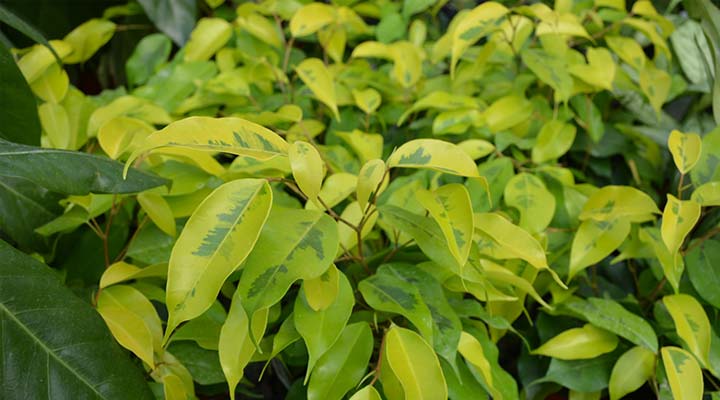
Another name for Benjamina’s Golden Kingdom is Jacqueline. This Ablaq shrub has glossy green leaves with cream-colored edges and is highly photophilous, and its environment temperature should be 25 to 30 degrees Celsius. Choose soil rich in nutrients to plant Benjamina Golden.
9. Benjamina Kinkey plant
Benjamina Kinky has thick glossy bright green leaves and grows in acidic or neutral soil. The crown of this species proliferates and makes a beautiful and dense bush that you can shape into your desired shape by pruning.
10. Benjamina Exotica plant
Exotica grows up to 1 meter in a pot and is an evergreen benjamina. The flower’s slightly hanging branches and shiny bright green leaves can withstand the cold weather, and you can enjoy the beauty of this plant on the staircase, porch, and gazebo of the house.
Benjamina plant maintenance conditions
Benjamina flower grows in tropical climates and semi-shaded environments and needs regular watering during the growing season. When autumn and winter come, reduce the watering frequency and increase the humidity.
1. The right light for Benjamina
Benjamina plant is light-loving. If you want to destroy this flower with your hands, place its pot in a dark room with low light. Where the morning sun does not shine directly on it, and there is not enough indirect light during the day. Benjamina does not tolerate much movement, even if the goal is to find better lighting conditions.
2. Irrigation Benjamina
During the growing season, keep the soil surface of the pot moist, but do not allow it to be submerged in water. Because, in this case, the leaves fall very quickly, and the roots rot. This happens at the beginning of the summer season with an increase in irrigation frequency. Try to have a consistent and regular watering schedule, and constantly water this flower with lukewarm water.
3. Temperature and humidity
Keep the Benjamina pot where the daytime temperature is 23 to 30 degrees Celsius and the night temperature is 15 to 23 degrees Celsius. Hotter and colder weather will damage this flower and eventually destroy it. Another issue is humidity. Benjamina, as a tropical plant, grows better in a humid environment, and low humidity causes the leaves of this plant to dry. We suggest you adjust the moisture in the house with a humidifier and mist the leaves from time to time.
4. Suitable soil for better growth
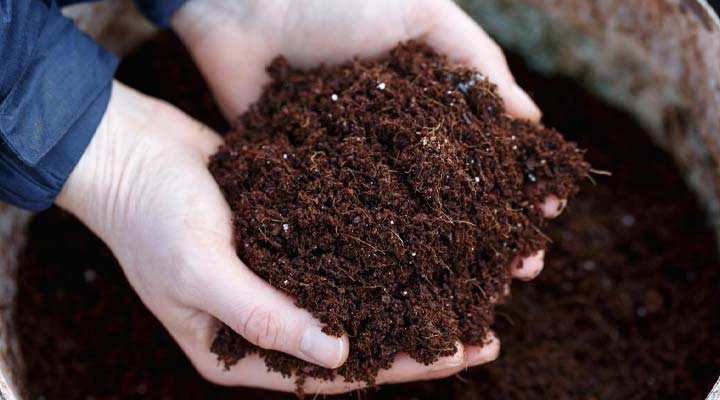
Unlike many houseplants, don’t look for nutritious soil rich in organic matter to fill the Benjamina pot. It is enough that the earth has good drainage and passes water quickly. Choose a mixture containing perlite, sand, and vermiculite.
5. Fertilization of Benjamina
Benjamina is a hungry plant by nature and needs a lot of fertilizer. Try to fertilize it once every two months in spring and summer and once a month in winter. If you see that despite the perfect conditions of light, temperature, humidity, and fertilizer, the leaves of the plant are still falling, add a little magnesium and manganese to the fertilizer for houseplants.
6. Pruning the Benjamina plant
Postpone Benjamina’s pruning to fall and winter. During this period, the plant does not grow actively, and since it is in winter sleep, the probability of damage due to pruning is much lower. Cut the dead leaves with sharp and sterilized scissors to make the plant look more beautiful and prevent diseases and fungal infections from spreading.
7. Change the pot
If you keep this apartment flower at home, you must know how fast it grows. Benjamina needs to change the pool once a year, and the best time for this is early spring.
Propagation of Benjamina plant by cuttings
Propagate Benjamina by cuttings separated from the main plant in the spring, and the temperature and humidity conditions are suitable for planting them. Remember that Benjamina rarely grows from seed and never bears fruit.
- Cut a 7 to 12-cm cut containing at least two sets of leaves on a healthy branch. Cut the leaves of the lower half of the cutting and, if desired, dip the cut end in the rooting hormone.
- Place the cutting in a container filled with moist peat moss and cover the container with a large plastic bag. (So that the bag is not in contact with the cutting.)
- Place the container in a bright room above 18 degrees Celsius under indirect sunlight. Mist every day to keep the pot moist and water if the soil surface dries out.
- After 2 to 4 weeks, the roots of the cuttings grow, and it is time to transfer them to the pot. First, make some slits in the bag, so the cuttings get used to the room’s conditions.
- After six weeks, plant the cuttings in the pot and provide the conditions for maintaining the Benjamina plant.
Common pests and problems of the Benjamina plant
The most common problem of maintaining the Benjamina plant is the unpleasant falling and wrinkling of the leaves. This shedding may be caused by pests such as aphids, mealybugs, scales, and spider mites. In this case, you can save the plant with insecticidal soaps or other pesticides.
Of course, sometimes this shedding is due to environmental stress, such as changing the pot, lack of nitrogen, excessive watering, waterlogging, lack of light, temperature changes, and frequent moving of the pool. In this case, the fall of leaves will continue until the plant fully adapts to the environment.
Common questions
1. Is it hard or easy to take care of Benjamina?
Benjamina belongs to the category of plants that do not have difficult maintenance conditions. It is enough to choose an environment with the right light for this plant and increase the humidity of the environment by misting it from time to time.
2. How fast does Benjamina grow?
Benjamina grows 60 cm a year and needs to be repotted and pruned earlier than other plants. It would be best if you changed the pot of this plant at least once a year.
3. What is the best way to propagate Benjamina?
The best way to propagate Benjamina is by cuttings. Benjamina rarely grows from seed.
4. What is the difference between Benjamina and Ficus macrocarpa?
Despite the remarkable similarity of these two species of ficus, Benjamina’s branches are narrower, bending more while macrocarpa grows flatter.
last word
Benjamina’s apartment plant belongs to the ficus family and is one of the famous apartment shrubs in Iranian homes due to its beautiful appearance and long life. As you read, the species of this plant have no difference except for the color and shape of the leaves, and they are all known for their hanging branches, leathery leaves, and beautiful trunks. Of course, the variety of Benjamin species is more than these; many are not easily found in the Iranian market.
What other information do you have about Benjamina’s plant? If you know any other tips about this flower, we are eager to hear your valuable comments.
